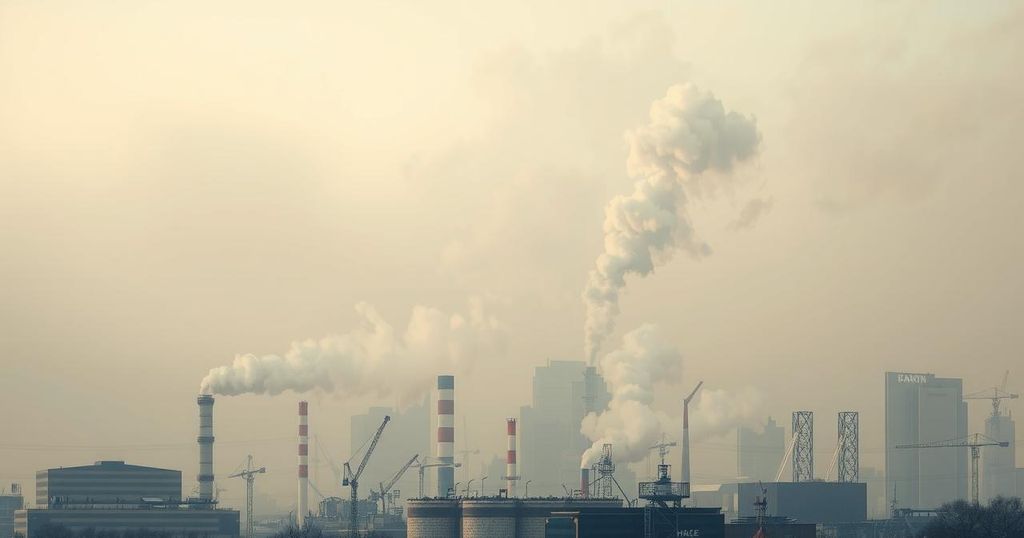In 2024, Pakistan ranked as the third most polluted country, according to IQAir’s report. The nation reported a PM2.5 level of 73.7 µg/m³, significantly exceeding WHO limits. Key cities include Lahore and Sialkot, with mixed changes in pollution levels across major urban centers. The report emphasizes the severe health impacts stemming from air pollution, affecting seven in ten people in Pakistan.
According to the annual World Air Quality Report by Swiss air technology firm IQAir, Pakistan has been ranked as the third most polluted country in 2024, following Chad and Bangladesh. The report highlights that Pakistan’s average concentration of PM2.5 particles is at 73.7 micrograms per cubic meter, which is nearly 15 times the safe limit established by the World Health Organization (WHO).
Despite an alarming prevalence of smog in the country, air pollution levels in Pakistan remained steady compared to 2023. In Central and South Asia, Pakistan ranks second for pollution levels, with cities such as Lahore, Multan, Peshawar, and Sialkot listed among the top 15 polluted cities in the region. Major contributors to Pakistan’s pollution include biomass burning, industrial emissions, vehicle exhaust, brick kilns, and construction dust.
The report notes a rise in annual average pollution levels in cities like Peshawar, Islamabad, and Rawalpindi, whereas Faisalabad experienced a minimal increase. Conversely, Karachi’s PM2.5 levels saw a decline, dropping from over 55 micrograms per cubic meter in 2023 to about 46 in 2024. Additionally, five Pakistani cities recorded pollution levels exceeding 200 microns in November.
Analyzing data from over 40,000 air quality monitoring stations worldwide, the report indicates that nearly 70% of the population in Pakistan struggles with health problems caused by smog. Comparatively, Chad’s pollution levels are reported to lie 18 times higher than WHO’s safe guidelines, while India’s levels are 10 times above recommended limits. Notably, India remains a significant contributor to global pollution with six of the world’s nine most polluted cities.
Byrnihat, an industrial area near Meghalaya and Assam, has been identified as the most polluted metropolitan area in 2024, with a PM2.5 level of 128.2 micrograms per cubic meter—over 25 times the WHO recommendation. Other polluted capitals include New Delhi, which is ranked first as the world’s most polluted capital, followed by N’Djamena in Chad and Dhaka in Bangladesh, with Islamabad also ranking in the top five.
The annual World Air Quality Report highlights Pakistan’s serious air pollution crisis, ranking it as the third most polluted country globally in 2024. Despite a lack of improvement in overall pollution levels, certain cities have reported alarming increases. The report underscores the impact of various pollutants on public health, revealing that many residents suffer from smog-related health issues. While some urban areas experience a decrease in pollution, others continue to face significant challenges, exacerbating the need for effective environmental policies.
Original Source: tribune.com.pk




